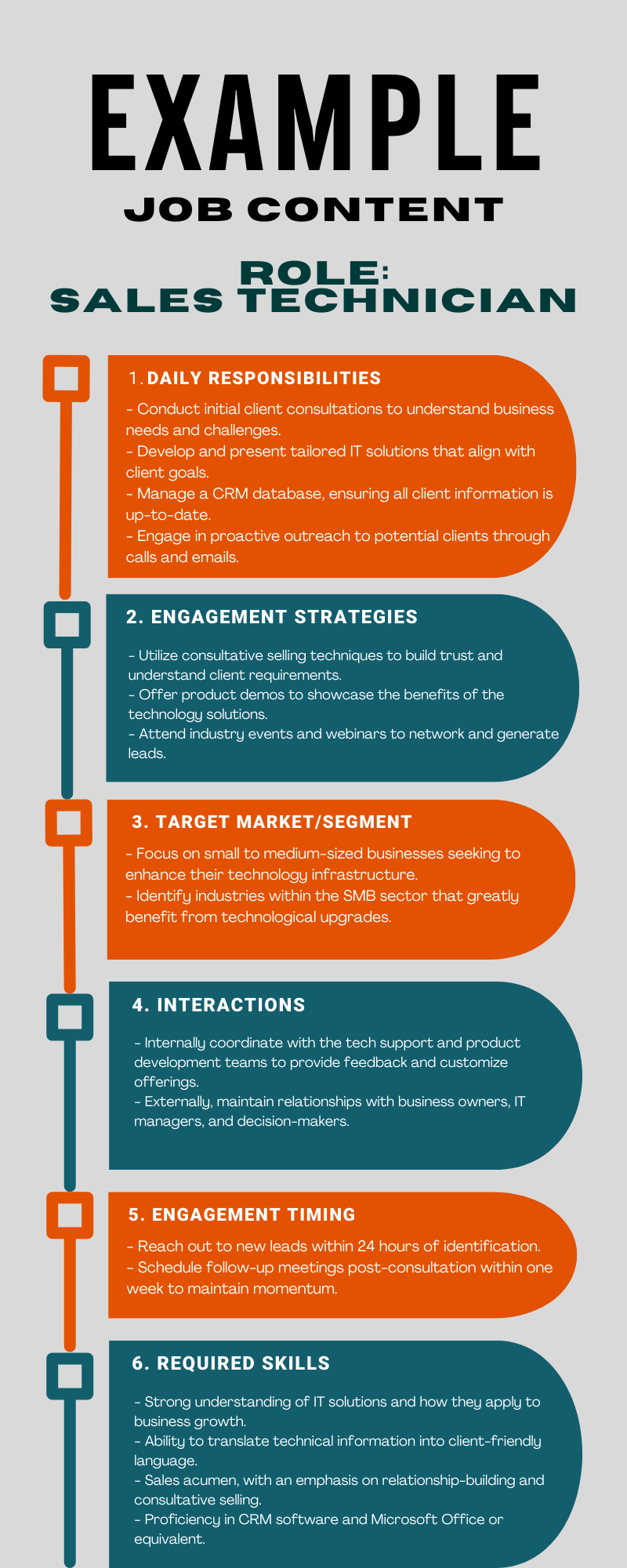The Foundation of Compensation Design: Understanding Job Content
It's about more than writing a job description...

Understanding job content isn't just a preliminary step in hiring a new employee or creating a new role—it's the foundation of the entire compensation design process. It informs every other decision, from establishing pay scales to aligning incentives with business goals, and it does this by outlining the core responsibilities, daily tasks, and required skills for a position.
Core Questions to Define Job Content
Probably the thing you think of first when you think about job content is the parts of the job description that outline what you're looking for and what the job entails. These are called compensable factors (education, work experience, etc.) and responsibilities.
This first step in defining job content for a sales role includes considering the following:
- Daily Responsibilities: What tasks will fill the employee's day?
- Engagement Strategies: How will they attract and interact with clients?
- Target Market/Segment: Who are the customers, and what needs do they have?
- Interactions: Who does this role require them to meet with, both inside and outside the organization?
- Time Allocation: When is the optimal percentage of time for engaging with prospects or customers?
- Required Skills: What specific skills and knowledge do they need to succeed?
Imagine a sales role focused on technology solutions for small businesses. The job content might include daily client consultations, crafting tailored IT proposals and solutions, and regular follow-up meetings to ensure customer satisfaction and support.

Aligning Job Content with Compensation Structures
Determining Job Level and Market Data Collection
Job content not only helps categorize roles into levels (entry, professional, advanced) but also aids in collecting accurate market data. Whether you're seeking to be competitive in your labor market or looking for ways to compensate for an inability to match the going pay rates for your roles, creating standardized role-based job content lays the groundwork for ensuring your compensation package is competitive and fair.
Setting Objectives and Expectations
Job content directly addresses:
- Objectives: What goals does the role aim to achieve?
- Budgeting: How does the role fit into the organization's overall budget and support the revenue expectations?
- Sales Cycle Considerations: What is the length and complexity of the sales process?
Performance and Payout
The specifics of job content shape:
- Performance Metrics: What are the Key performance indicators (KPIs) tailored to the role?
- Payout Timing: When and how often bonuses or commissions are paid for specific achievements?
- Risk Assessment: What is the proportion of pay tied to performance?
Pay Transparency in Sales Compensation
Compliance with Pay Regulations
Detailed job content documentation prepares you for the changing legal landscape in terms of pay transparency but also sets you up for success in creating an equitable and fair environment. It's a crucial step in staying compliant with various regulations.
Implementing a Job Content-First Approach in Compensation Design
Steps for Organizations
As with all aspects of compensation design, creating your job content is not a set-it-and-forget-it process. Regular reviews are required to keep up with your organization's changing strategy and go-to-market model. Preparing job content for compensation design requires the following:
- Conduct Thorough Job Analysis: Clearly define what each sales role entails.
- Regularly Updating Job Descriptions: Keep pace with changes in market demands and business objectives.
- Aligning Compensation with Job Content: Ensure pay structures reflect the value and demands of each role.
Continuous Evaluation and Adaptation of Job Content
Adapting job content and compensation strategies is an ongoing process. Markets evolve, and so should your approach to compensation design.
Placing job content at the heart of compensation design ensures your sales team is motivated, competitive, and aligned with your business goals. It's not just about paying fair wages; it's about building a transparent, equitable system that recognizes and rewards true value and performance. Embrace a job content-first approach for a robust compensation strategy that stands the test of time.













